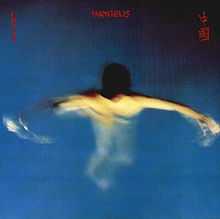China (album)
| China | ||||
|---|---|---|---|---|
 | ||||
| Studio album by Vangelis | ||||
| Released | 1979 | |||
| Recorded | Nemo Studios, London, 1978 | |||
| Genre | Electronica | |||
| Length | 41:17 | |||
| Label |
Polydor (LP) POLD 5018 (CS) 813653-4 | |||
| Producer | Vangelis | |||
| Vangelis chronology | ||||
| ||||
| Professional ratings | |
|---|---|
| Review scores | |
| Source | Rating |
| Allmusic | |
| Piero Scaruffi | (6/10)[2] |
China is a 1979 album by the Greek artist Vangelis. Although he had never been to China, he employed Chinese instruments and compositional styles on this concept album.
Track listing
- "Chung Kuo" – 5:31
- "The Long March" – 2:01
- "The Dragon" – 4:13
- "The Plum Blossom" – 2:36
- "The Tao of Love" – 2:46
- "The Little Fete" – 3:01
- "Yin & Yang" – 5:48
- "Himalaya" – 10:53
- "Summit" – 4:30
Addendum to tracklisting:
Although Polydor issued this album as POLD-5018, and re-issue as SPELP-19 the track timings were never accurate either, and confusion exists as to what Chung Kuo and The Long March actually were in length. Other country releases of China have a different, and probably are the more accurate releases of China with the proper track timings:
The White noise and effects intro is actually "Chung Kuo" and the long melodic synthesizer track and piano ending is "The Long March" If you acquire the 7" single release "The Long March Part-1/Part-2" (POSP-57). You will hear this.
- Proper Track Listing & Timings*
- "Chung Kuo" - 1:43
- "The Long March" - 5:50
- "The Dragon" - 4:06
- "The Plum Blossom" - 2:30
- "The Tao Of Love" - 2:40
- "The Little Fete" - 2:57
- "Yin & Yang" - 5:48
- "Himalaya" - 10:54
- "Summit" - 4:32
Instruments and style
Vangelis plays synthesizers, drum machines, electric piano ("The Tao of Love"), piano ("The Long March", "The Plum Blossom", "Himalaya"), various Chinese flutes and plucked string instruments. Featured artists are Michel Ripoche (violin on "The Plum Blossom") and Yeung Hak-Fun and Koon Fook Man (narrative on "The Little Fete").
China was engineered by Keith Spencer-Allen, Raphael Preston, and Andy Hendriksen, and the album sleeve was designed by Vangelis himself.
The album was conceived during a very active period in Vangelis' recording career, during which he explored the possibilities of electro-acoustic composing. Vangelis employs his synthesizer arsenal to the fullest, generating sound effects (steam locomotive on "Chung Kuo") and various Chinese-sounding patches on all tracks.
Concepts used range from classical Chinese poetry ("The Little Fete" is a poem by the 8th century Li Po, translated by J.C. Cooper) to revolutionary history of the People's Republic of China ("The Long March").
Cultural appearances
Film director Ridley Scott utilised a dreamy, atmospheric clip from The Little Fete as the soundtrack to his 1979 Chanel No. 5 Share the Fantasy commercial, which showed a woman lying beside a swimming pool, and aired on American television well into the 1980s. Scott subsequently employed Vangelis to score his seminal 1982 film, Blade Runner. During the outdoor performances of the Shanghai Expo 2010 opening ceremonies, the track "The Dragon" was used.[citation needed]
References
- ↑ Allmusic review
- ↑ Scaruffi, Piero (1999). "Vangelis". pieroscaruffi.com. Retrieved September 10, 2013.
| |||||||||||||||||||||||